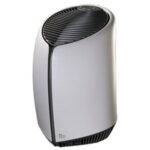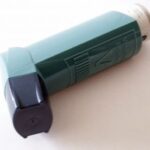What’s the difference between cleaning air and purifying it? Way more than meets the senses.
While air filtration is an effective way to remove harmful particles from the air, air purification, when combined with multiple air cleansing technologies, can protect you and your family from even more problems related to illness and respiratory ailments, like allergies and asthma.
When looking for an air purifier, it’s important to keep in mind what you need it for – factors such as room size and potential ailments or allergies – and to research what makes a truly worthy air purifier.
1. HEPA Filter:
HEPA , High Efficiency Particulate Arresting, filters are rated as the most effective filters by the United States Environmental Protection Agency (EPA).
HEPA filters use three types of filtration methods: Interception, Impaction, and Diffusion. Basically, during Interception, the particle attaches to one of the filter’s fibers. Then, by force, the particle embeds itself into the fiber through the trajectory of the traveling airstream, thus, called Impaction. Lastly, Diffusion ensures that the smaller particles (.1 microns or below) do not blow out of the filter but collide with air and gas molecules that trap them inside.
A true HEPA filter,” to quote Air Purifier Source, is “capable of removing at least 99.97% of particles .3 microns and larger that pass through it, which is great for allergy and asthma sufferers.”
2. Ionizer:
Negative ions magnetically attract positively-charged air molecules, making them too heavy to stay in the air and to fall out of range of the respiratory tract. At this point, they can be cleaned by normal means: vacuuming, dusting, and through the use of surface cleaning sprays.
Combined with a highly-effective air filter, ionization can improve the efficiency of the overall filtration of the air, according to a recent study conducted by the Journal of Hygiene.
Ionizers have also been proven to decrease carbon monoxide levels, as is stated in studies by the European Respiratory Journal, as well as minimize airborne viruses by 40%, according to the Journal of Applied Microbiology.
U.S. Department of Agriculture adds that, in a recent study, ionization successfully removed airborne salmonella bacteria by 95% as well as floating dust and other potentially harmful particles by 99% in 60 seconds.
3. Activated Carbon and Sanitizer:
Activated Carbon (AC) filtration passively removes harmful gases and other toxins in the air through absorption, and with the combined effort of a sanitizer, an Ozone effect occurs. Ozone molecules are emitted into the air, cleansing any foul odors that are caused by such gases, toxins, and bacteria.
4. UV Lamp:
Some air purifiers offer the added benefit of UV Lamps that target microorganisms and destroy their DNA, thus, making it impossible for them to reproduce and multiple.
5. Cost Effectiveness:
While searching around for air purifiers, I found some that cost very little and some that cost a bit more. However, when you think about it, it’s well-worth the investment for multiple reasons. The obvious being a better breathing experience and a decreased chance of getting ill.
When I say investment, it truly is one. During a day of window shopping, I spied an HEPA air purifier from Surround Air that not only costs under two-hundred; it had all of the above features as well. If you’re willing to invest a little more, you can also find some from Blue Air that run as quietly as a sleeping cat.
Any way you look at it, air purification is a no-brainer; it works and it’s affordable. You just need to know where to look and what to look for.
SOURCES:
http://airpurifiersource.com/The_Official_Air_Purifier_Buyers_Guide.pdf
http://www.airpurifiersource.com/homepage-products/surround-air-multi-tech-xj-3000c-air-purifier.html
http://www.epa.gov/iaq/aircleaners/index.html
http://en.wikipedia.org/wiki/HEPA






